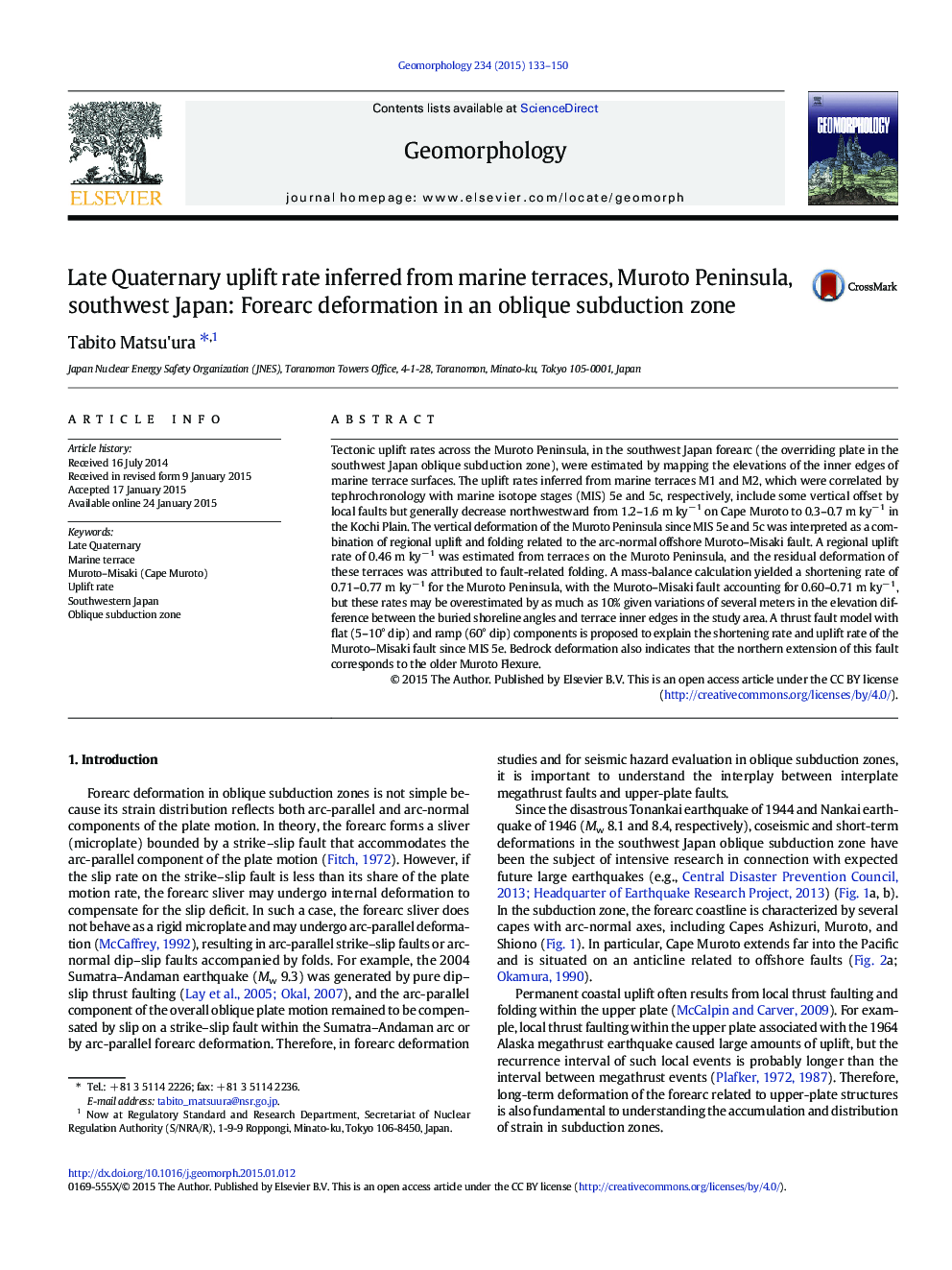| کد مقاله | کد نشریه | سال انتشار | مقاله انگلیسی | نسخه تمام متن |
|---|---|---|---|---|
| 6432190 | 1635415 | 2015 | 18 صفحه PDF | دانلود رایگان |
- MIS 5e and 5c shoreline angles were studied on Muroto Peninsula, southwest Japan.
- Shoreline angles beneath marine terrace surfaces were reconstructed from boreholes.
- Distribution of uplift indicates anticlinal deformation by an offshore thrust fault.
- Shortening rate of the Muroto Peninsula by an offshore fault is 0.60-0.71 m kyâ 1.
- Offshore fault is modeled as a combined flat and ramp thrust fault.
Tectonic uplift rates across the Muroto Peninsula, in the southwest Japan forearc (the overriding plate in the southwest Japan oblique subduction zone), were estimated by mapping the elevations of the inner edges of marine terrace surfaces. The uplift rates inferred from marine terraces M1 and M2, which were correlated by tephrochronology with marine isotope stages (MIS) 5e and 5c, respectively, include some vertical offset by local faults but generally decrease northwestward from 1.2-1.6 m kyâ 1 on Cape Muroto to 0.3-0.7 m kyâ 1 in the Kochi Plain. The vertical deformation of the Muroto Peninsula since MIS 5e and 5c was interpreted as a combination of regional uplift and folding related to the arc-normal offshore Muroto-Misaki fault. A regional uplift rate of 0.46 m kyâ 1 was estimated from terraces on the Muroto Peninsula, and the residual deformation of these terraces was attributed to fault-related folding. A mass-balance calculation yielded a shortening rate of 0.71-0.77 m kyâ 1 for the Muroto Peninsula, with the Muroto-Misaki fault accounting for 0.60-0.71 m kyâ 1, but these rates may be overestimated by as much as 10% given variations of several meters in the elevation difference between the buried shoreline angles and terrace inner edges in the study area. A thrust fault model with flat (5-10° dip) and ramp (60° dip) components is proposed to explain the shortening rate and uplift rate of the Muroto-Misaki fault since MIS 5e. Bedrock deformation also indicates that the northern extension of this fault corresponds to the older Muroto Flexure.
Journal: Geomorphology - Volume 234, 1 April 2015, Pages 133-150
